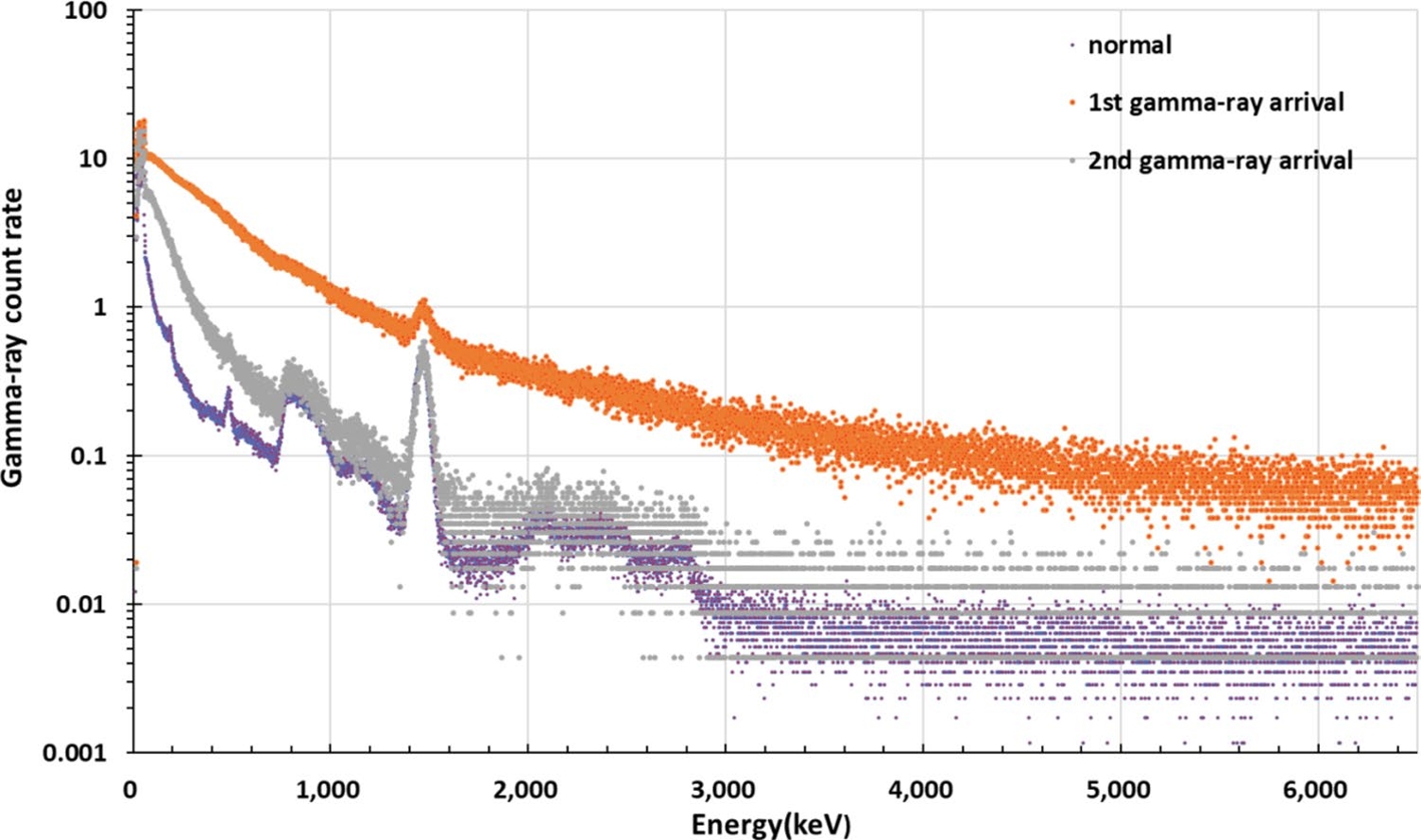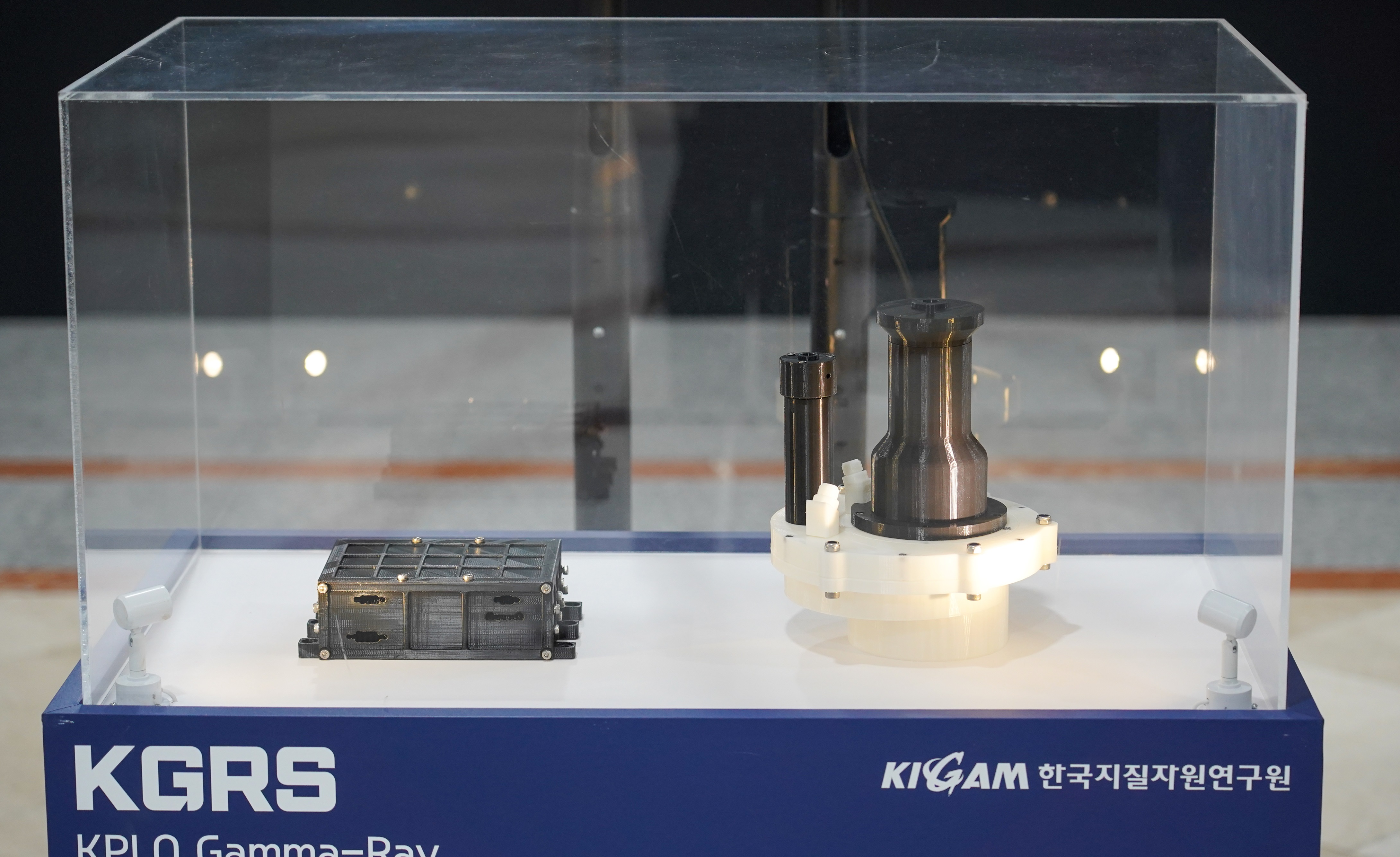
The spectrum during gamma-ray burst (GRB221009A) as observed from Danuri, Korea's lunar orbiter.
By Kim Hyelin
Photos = Korea Institute of Geoscience and Mineral Resources
A gamma-ray spectroscope aboard Danuri, Korea's first lunar orbiter, succeeded in measuring a gamma-ray explosion 2.4 billion light-years away.
A research team led by Dr. Kim Kyeong Ja published the paper, "The GRB221009A gamma-ray burst as revealed by the gamma-ray spectrometer onboard the KPLO (Danuri)," in The Scientific Report, an international academic paper.
The team is with the Space Resources Exploration and Utilization Center under the Korea Institute of Geoscience and Mineral Resources (KIGAM).
Its observation was conducted using the KGRS gamma-ray spectroscope.
A gamma-ray explosion refers to a phenomenon of a massive energy release, in a distant galaxy, that emits gamma rays, which can be observed from space. It has the highest amount of energy release per hour out of all the phenomena observed from space.
The article is about the results from the observations of the strongest gamma-ray explosion this century (GRB20221009A), which occurred on Oct. 9, 2022.
The results showed the photon energy amounted up to 18 TeV (teraelectron volts), with gamma rays increasing up to 49 times the standard.

The gamma-ray spectroscope that was installed on Danuri, Korea's lunar orbiter.
The team used the gamma-ray spectroscope from Aug. 9, 2022, the fourth day after the launch of Danuri, to collect data.
It also used the device at 1:21 p.m. and 1:25 p.m. on Oct. 9, 2022 to observe the gamma-ray explosion that occurred 1.51 million km from Earth.
The gamma-ray spectroscope is an instrument that collects data in the gamma-ray spectrum from the moon's surface. It is used to discover geological resources on the moon and has produced a map of more than five elements found on the moon. It collects data from gamma-ray observations every 10 seconds during its orbit.
Based on its observation of gamma rays, KIGAM plans to make a map of the elements of the moon’s surface for research on geological resources. It also plans to make a map of the cosmic radiation in the moon’s environment.
kimhyelin211@korea.kr